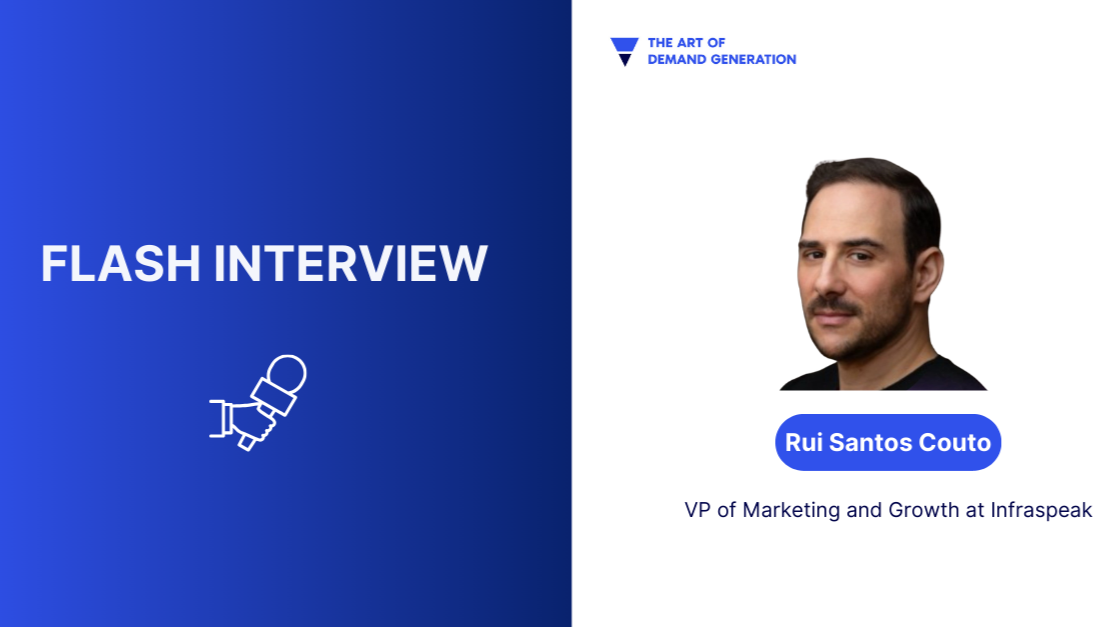
3 Questions for Rui Santos Couto on B2B SaaS Demand Generation
1. What are the most common mistakes B2B SaaS companies make when trying to generate demand?
First off, let me say that making mistakes is part of the job. It’s inevitable, and often, it’s where the best learning happens. That being said, I’ve seen some recurring mistakes that are worth addressing.
One of the most common is underestimating the fundamentals—positioning, narrative, and channel strategy. It’s about getting the basics right: telling the right story, to the right people, at the right time, in the right place. If you don’t truly understand your customers—what they care about, how to talk to them, and where to reach them—everything else will fall flat.
Another mistake is trying to create demand before you’re ready to capture it. For B2B SaaS, especially when resources are limited, the priority should be on getting in front of SaaS buyers who are already in the market and have a high intent to buy a solution like yours.
Once you’ve built the foundation for capturing demand efficiently, then you can start thinking about generating demand earlier in the funnel. Focus first on low-hanging fruit and scale from there.
2. How would you define product-market fit in the context of B2B SaaS, and what are the leading indicators that tell you when a company has truly achieved it?
You often hear people say, “You’ll know when you’ve reached product-market fit,” and I think that’s true. When you’re getting there, it becomes obvious because of the types of signals you start receiving—requests, feedback, and objections from buyers.
That’s why it’s so important to track every request and objection carefully and use them to refine your product and positioning. For me, product-market fit is a never-ending process. It evolves as your company grows, especially when you start moving upmarket. What worked for early adopters or SMBs might not resonate with enterprise buyers, so it’s critical to keep listening, iterating, and adapting.
Focus on acquiring new customers to understand their needs and gather insights, then shift to making those customers successful and happy before scaling acquisition further. This cycle ensures you’re continuously refining your product based on real-world feedback.
The journey doesn’t end at “fit”—it becomes more sophisticated as your market and customers evolve.
3. How do you see the role of demand generation in an early-stage SaaS company? Should it fall under marketing as part of its core responsibilities, be managed within sales operations, or function as a standalone area? (if it's standalone, how should it be integrated with marketing and sales?)
There’s no one-size-fits-all answer to where demand generation should live. It depends on your company’s experience, culture, and what demand generation looks like in your industry. That said, let me share what’s working for us at Infraspeak and how I see things moving in the broader B2B SaaS world.
That old “inbound vs. outbound” mindset doesn’t work anymore. Buyers don’t operate in silos, so your strategy can’t either. Today, demand generation needs to be orchestrated, multi-threaded, omnichannel, and with a data-driven personalisation mindset. It’s about being present wherever your buyers are and ensuring a consistent, relevant experience across every touchpoint.
That said, I like to build marketing teams that are responsible for generating new revenue pipeline, so what we have is a Demand Generation team that's in the Marketing organisation delivering new pipeline to the sales team following clear criteria. Our demand generation team has a Performance Marketing department where you'll see everyone from SEO to Paid Media and a Sales Development team of SDRs and BDRs. This structure ensures that demand gen is tightly integrated with both marketing and sales while still being focused on its core mission: driving pipeline.
If I go back some years, when we were an early-stage company, let's say these principles were the same at a different scale, and the alignment and shared focus on new business have been there since day one.
What I can’t see working anymore is the outdated strategy of relying solely on cold calling or cold emailing. Today’s buyers are more informed and expect more personalized, valuable interactions. If your approach doesn’t reflect that, you’ll quickly fall behind.